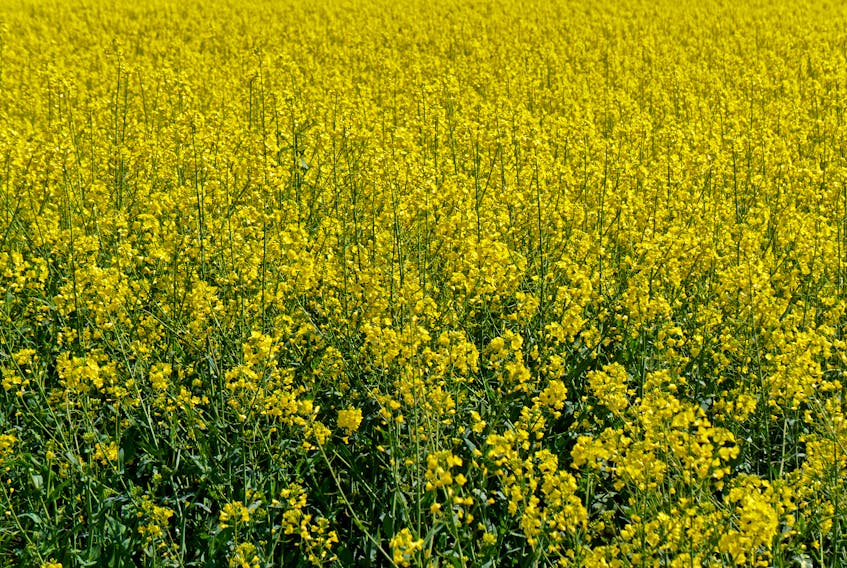As Vanessa Kavanagh stood among a field of winter wheat in Pasadena on Monday she was taken back to two years ago when the field at Green Acres Farm was filled with canola.
It was the first year of a project of the provincial government undertaken by the Western Agriculture Centre: Agriculture Research Station. The Pynn’s Brook station is part of the Agriculture Production and Research Division of the Department of Fisheries and Land Resources.
Kavanagh is the research scientist who runs the grain and oilseed program.
She said in year one the goal was to figure out how to deal with canola, the process to grow it, feeding and the work required.
The results were good and in year two the project moved to Cormack and Kavanagh said “it just ran like a top.”
This year another 45 acres have been planted in Cormack and 20 acres in Black Duck Siding.
Two years ago, Kavanagh spoke of the potential of bottling canola oil for commercial sale.
“Well that’s where we were going with it and we were trying to figure out that processing. But it turns out the higher value is actually to use it as fat additive for dairy cows,” she said.
“The economics actually worked out better to use it on farm as a feed fat.”
Most farms use palm fat imported from Malaysia, but through the trial they now have a local option.
That doesn’t mean commercial production is off the shelf.
“The commercial is coming,” said Kavanagh.
“It could very well end up on a supermarket shelf soon,” she said. That may be in a bottle for food consumption or in skin care products, as it’s a very versatile oil.
Kavanagh said the department is working with Raymond Thomas at Grenfell Campus, Memorial University of Newfoundland on the commercial aspect.
Thomas will be spearheading figuring out what the processing requirements are going to be and the nutritional outcome.
Once the cows have started to be fed the canola meal and oil, Thomas will also be testing all their milk to look for changes in the milk quality.









